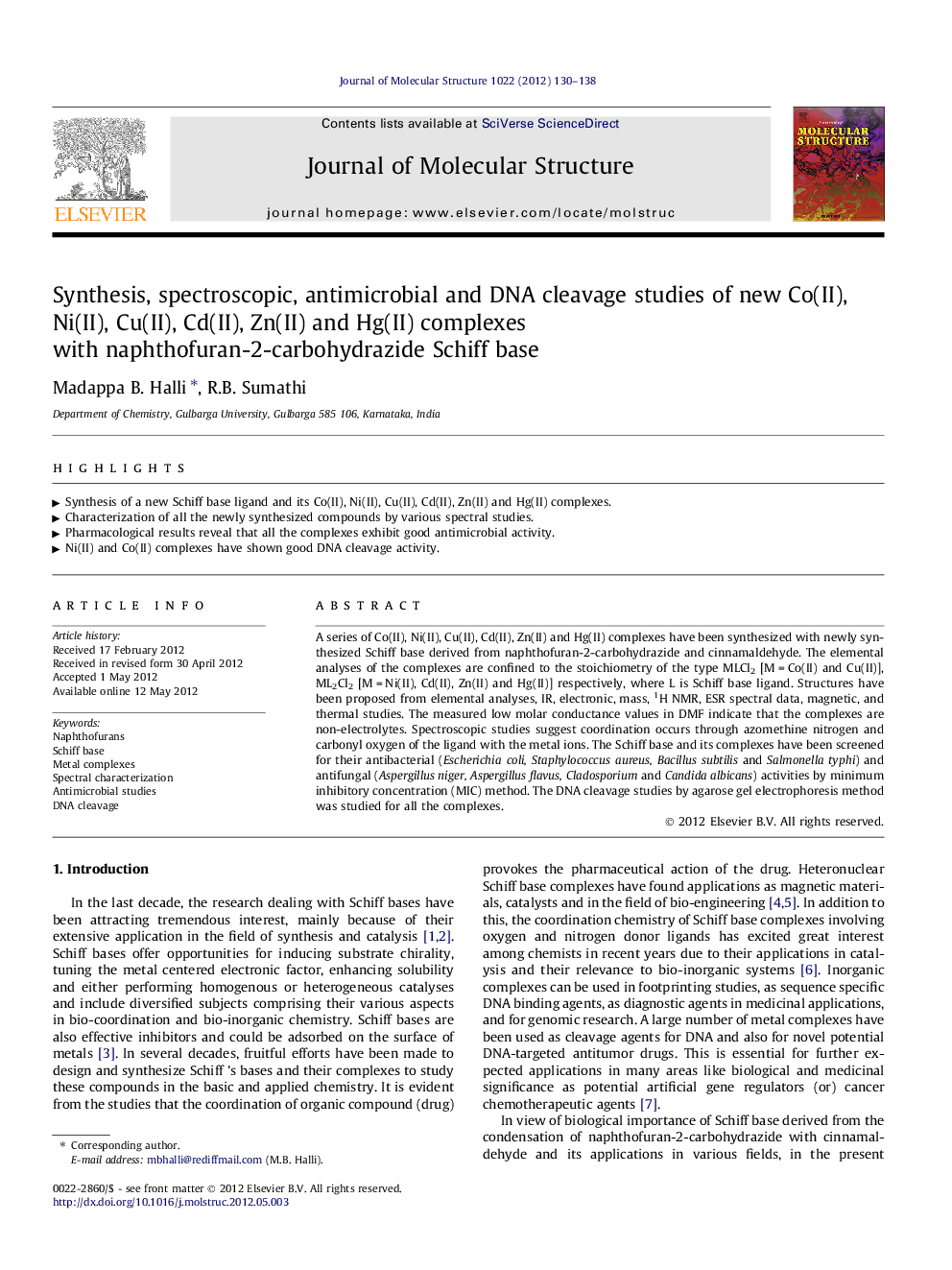| Article ID | Journal | Published Year | Pages | File Type |
|---|---|---|---|---|
| 1409540 | Journal of Molecular Structure | 2012 | 9 Pages |
A series of Co(II), Ni(II), Cu(II), Cd(II), Zn(II) and Hg(II) complexes have been synthesized with newly synthesized Schiff base derived from naphthofuran-2-carbohydrazide and cinnamaldehyde. The elemental analyses of the complexes are confined to the stoichiometry of the type MLCl2 [M = Co(II) and Cu(II)], ML2Cl2 [M = Ni(II), Cd(II), Zn(II) and Hg(II)] respectively, where L is Schiff base ligand. Structures have been proposed from elemental analyses, IR, electronic, mass, 1H NMR, ESR spectral data, magnetic, and thermal studies. The measured low molar conductance values in DMF indicate that the complexes are non-electrolytes. Spectroscopic studies suggest coordination occurs through azomethine nitrogen and carbonyl oxygen of the ligand with the metal ions. The Schiff base and its complexes have been screened for their antibacterial (Escherichia coli, Staphylococcus aureus, Bacillus subtilis and Salmonella typhi) and antifungal (Aspergillus niger, Aspergillus flavus, Cladosporium and Candida albicans) activities by minimum inhibitory concentration (MIC) method. The DNA cleavage studies by agarose gel electrophoresis method was studied for all the complexes.
► Synthesis of a new Schiff base ligand and its Co(II), Ni(II), Cu(II), Cd(II), Zn(II) and Hg(II) complexes. ► Characterization of all the newly synthesized compounds by various spectral studies. ► Pharmacological results reveal that all the complexes exhibit good antimicrobial activity. ► Ni(II) and Co(II) complexes have shown good DNA cleavage activity.
